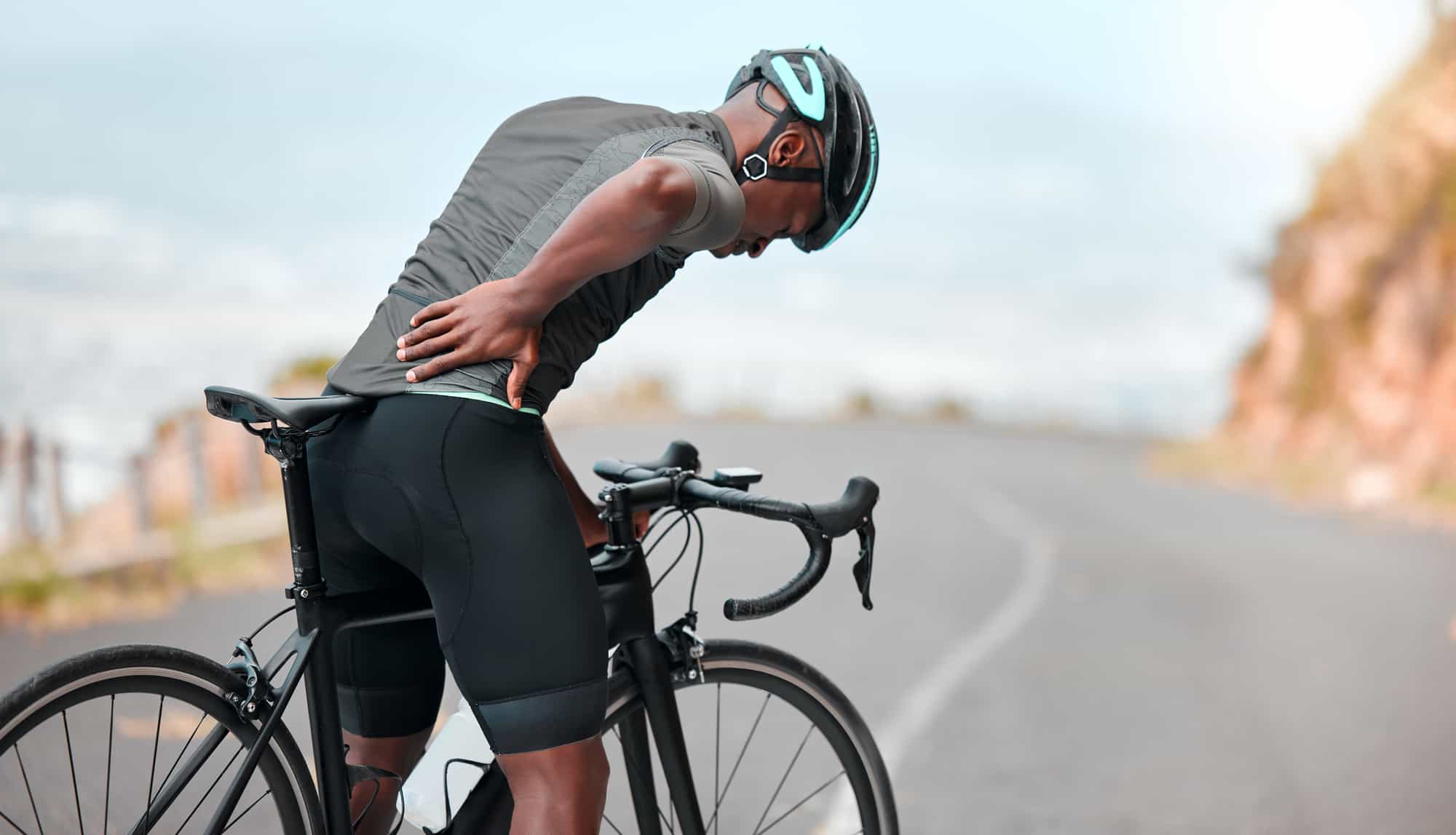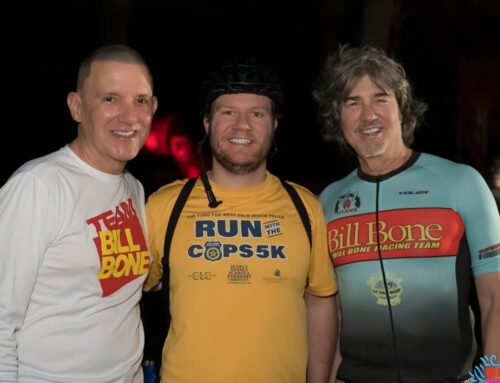Cycling is a fun and exciting low-impact cardiovascular activity that is enjoyed by tens of millions of Americans.
However, despite the low-impact nature of cycling, it can still lead to a variety of muscle injuries. Lower back pain is one of the most common.
Lower back pain can range from mild discomfort to severe pain that can make it impossible to ride. The pain is typically located in the lumbar region of the spine, which is the lower back area and can be felt on one or both sides of the spine. Lower back pain is often described as a dull ache, sharp pain, or a burning sensation, and it can be accompanied by stiffness, tenderness, or tightness in the muscles.
The duration of lower back pain can also vary, with some cyclists experiencing pain during or after a ride, while others may experience pain that persists even when not cycling. If left untreated, lower back pain can worsen and may lead to other issues, such as numbness, tingling, or weakness in the legs.
Causes of Lower Back Pain in Cyclists
The severity and location of lower back pain can vary depending on the underlying cause. Common causes of lower back pain experienced by cyclists include:
- Poor bike fit – One the main causes of lower back pain in cyclists is poor bike fit. The saddle height, reach, and handlebar height all play a role in the development of lower back pain. If the saddle is too high, the cyclist may have to overextend their legs, resulting in pressure on the lower back. On the other hand, if the saddle is too low, the cyclist may have to hunch over, putting additional strain on the lower back. In addition, if the handlebars are too low, the cyclist may have to lean forward, exacerbating the issue.
- Muscle imbalances – Another contributing factor is muscle imbalances. Cycling primarily uses the quadriceps and glutes, which can cause these muscles to become stronger than the lower back muscles. As a result, the lower back muscles may become strained and painful. This issue can be compounded by a lack of flexibility in the hips and hamstrings, which can further increase the strain on the lower back.
- Overuse and fatigue – These can also contribute to lower back pain in cyclists. The repetitive nature of cycling can lead to muscle fatigue, which can cause pain in various areas of the body, including the lower back. Additionally, if a cyclist is riding for extended periods without taking breaks or using the correct techniques, it can result in muscle strain, which can cause or exacerbate back pain.
Prevention of Lower Back Pain in Cyclists
Tips to prevent lower back pain include:
- Proper bike fit – The best way to prevent lower back pain is to ensure proper bike fit. A properly fitted bike can help ensure that the cyclist’s saddle height, handlebar height, and reach are all set correctly for their body size and shape. This can help prevent strain on the lower back and other areas of the body.
- Core strengthening exercises – Another method to help guard against lower back pain is to perform core strengthening exercises. The core muscles, including the abs and lower back muscles, are important for maintaining good posture and providing stability to the body while riding. Exercises such as planks, side planks, and back extensions can help strengthen these muscles.
- Stretching and rest – Stretching and rest after rides can also help prevent lower back pain. It’s important to stretch the lower back muscles, as well as the hamstrings and hip flexors, which can also contribute to lower back pain. Also, taking rest days when necessary can help prevent overuse and fatigue.
Treatment of Lower Back Pain in Cyclists
Treatments for lower back pain include:
- Rest and ice – Resting the lower back and applying ice can help reduce pain and inflammation.
- Pain medication – Over-the-counter pain medication can help reduce pain and inflammation as well.
- Physical therapy – A physical therapist can help assess the cyclist’s posture and bike fit and recommend exercises to help relieve pain and prevent future injuries.
- Massage therapy – Massage therapy can help loosen tight muscles and relieve pain.






Leave A Comment